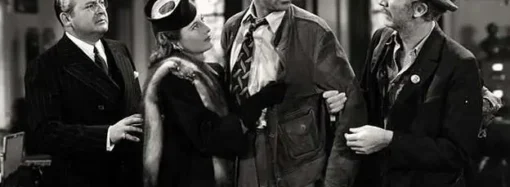My father came to the United States in the 1950s under the Bracero Program, worked multiple jobs for most of his life, bought a home in Southern California, and put his two children through school.
Though we never had the conversation, I can imagine his surprise at hearing that the expensive education he afforded his American-born children was a long lesson in why they shouldn’t embrace the country that had given him, and them, so much. The America—and the California—my father found was very different after all.
According to a Pepperdine University study, by 1970 the typical Latino in the Golden State spoke only English and had fully assimilated into “Anglo” culture. But times have changed and assimilation has been eclipsed by the rise of multiculturalism. The Pavlovian outrage at former NBC News anchor Tom Brokaw’s benign comment over the weekend about Hispanic assimilation is testament of this.
“I . . . happen to believe that the Hispanics should work harder at assimilation,” Brokaw said during a panel discussion on “Meet the Press” Sunday. “That’s one of the things I’ve been saying for a long time. You know, they ought not to be just codified in their communities but make sure that all their kids are learning to speak English, and that they feel comfortable in the communities. And that’s going to take outreach on both sides, frankly.”
Brokaw, a self-described liberal Democrat, said nothing that would have been considered controversial 15 or 20 years ago. It’s a sign of the times that a man who once considered it a “test” to work in a “deeply conservative” newsroom is not immune to the outrage and abuse of the quixotic multicultural Left.
Lauding the American identity now anathema.
To better understand it got that way, the late Harvard political scientist Samuel P. Huntington offered an enlightening guide in his final book, Who Are We?, published in 1995. In brief, assimilation and civic identity fell out of favor because the schools stopped teaching those things.
The classroom, Huntington explains, from the Progressive Era until recently were central in the promotion of a cohesive American identity, thus facilitating the assimilation of immigrants and their children into our national mythos.
Thanks to the efforts of reformers, and immigrants themselves who were resolved to Americanize, by 1920 the United States had achieved more or less universal literacy. This feat is testament to the theory and practice of American idealism.
Indeed, until the advent of post-1965 mass immigration, the United States was a nation of some 200 million people virtually all of whom spoke English. The Pepperdine study illustrates the connection between assimilation and English, and the lasting impact of the Progressive Era.
Today, however, there are 65.5 million people in America who report speaking a language other than English at home. Spanish is the “other language” for 62 percent of them—around 40 million people. As of 2016, there are 26.1 million individuals in the United States collectively classified as Limited English Proficient (LEP). Spanish speakers account for 64 percent (16.6 million) of the LEP population. Never before in American history have so many people spoken a single non-English language.
If our schools could promote unity then so, too, can they now sow disunity.
A study from the early 1990s of high school students in San Diego, California, which Huntington cites, illustrates the shift. University of California-Irvine sociologist Rubén G. Rumbaut found that after just three years of school, the proportion of students who identified as “American” dropped by 50 percent, the proportion that identified as hyphenated Americans dropped by 30 percent, and the proportion that identified with a foreign nationality alone (overwhelmingly Mexican) had increased by 52 percent.
But if high school doesn’t do the trick, there is always college.
At the University of California-Berkeley, Huntington noted, minority and immigrant students who “describe themselves in high school as so assimilated into majority Anglo environments that they did not think of themselves as minority group members,” report a change of heart shortly after freshman orientation.
Berkeley helped students to “see themselves differently,” Huntington observed. In other words, the university helped them to cultivate and embrace their ethnic and racial identities. One Mexican-American student claimed to have been “born again here at Berkeley.” Fiat Lux indeed.
The greatest obstacle to assimilation now isn’t necessarily immigrants, but American academia that has made “diversity”—that is, division—its business.
They work toward the day, in the words of one scholar, when the United States “may never again be culturally ‘united,’ if ‘united’ means ‘unified’ in beliefs and practices,” and, in keeping with the promise of multiculturalism, to the day when Americans will not be a “culturally definable group.” Martha Nussbaum of the University of Chicago derides “patriotic pride” as “morally dangerous,” supporting George Lipsitz of the University of California, San Diego, when he argues that “in recent years refuge in patriotism has been the first resort of scoundrels of all sorts.” University of Pennsylvania President Amy Gutmann is appalled at the idea that American students might learn that they are, “above all, citizens of the United States.” Richard Sennett of NYU denounces “the evil of a shared national identity,” while Peter Spiro of Hofstra University is content with the thought that it is “increasingly difficult to use the word ‘we’ in the context of international affairs.”
So Brokaw is half-right. Integration into American society for immigrants and their children has brought untold prosperity to millions, so Hispanics should work harder to assimilate.
But the institutions created for that purpose are now geared to perform precisely the opposite function, and it just so happens that many of the people Brokaw rubs elbows with are to blame both for the challenges to assimilation and the outrage culture that has claimed him as its latest victim.
—
This article was republished with permission from American Greatness.
[Image Credit: Wikimedia Commons, Public Domain]
















Leave a Comment
Your email address will not be published. Required fields are marked with *